“Top-notch Crémant” – The Telegraph
Posted by Gavin Quinney on 29th May 2025

Toot toot! In her piece for the Telegraph last week called ‘The best bubbles for the bank holiday’, wine correspondent Victoria Moore kindly included our delicious sparkling wine.

‘With supermarket shelves awash with sparkling upstarts, our wine expert separates the gimmicks from the genuinely good (and great value)’ was the subheading above.
Under ‘Pick of the crémants’ Château Bauduc was pictured online in all its glory. “A top-notch crémant that is elegant, savoury and suave. Made from hand-picked sémillon, this has notes of lemon shortbread and is gorgeous with asparagus.”
More on the wine below and we thought we’d throw in a few pictures of the 2020 harvest for the wine.
If you have any questions, suggestions or would like to get in touch, please email us both by clicking this link.
All the best
Gavin & Angela Quinney
PS Link to the full piece by Victoria in the Telegraph here.
The wine
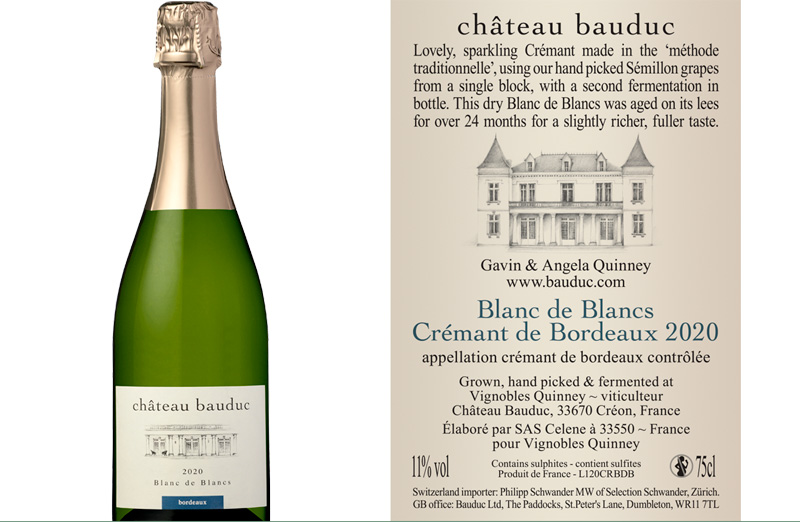
Crémant de Bordeaux, Blanc de Blancs 2020
The back label: ‘Lovely, sparkling Crémant made in the ‘méthode traditionnelle’, using our hand picked Sémillon grapes from a single block, with a second fermentation in bottle. This dry Blanc de Blancs was aged on its lees for over 24 months for a slightly richer, fuller taste. 11% vol.’
£16.50 a bottle in a case of 6
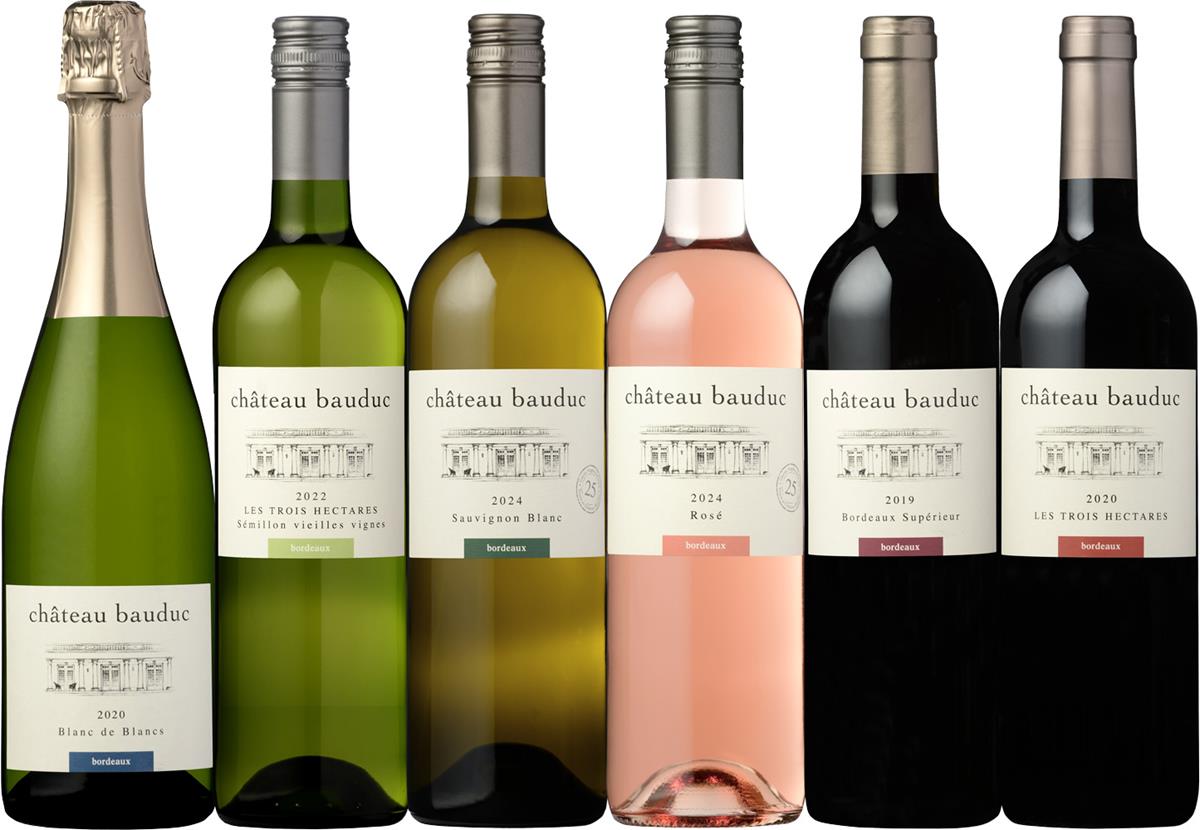
Bauduc Collection 2025
There is also a mixed case which also includes the crémant. This is a cracking collection of our signature wines, including our two dry whites, two reds and our rosé.
£14.25 a bottle in a case of 6
1 x Blanc de Blancs Crémant de Bordeaux 2020
1 x Les Trois Hectares blanc 2022
1 x Sauvignon Blanc 2024
1 x Rosé 2024
1 x Bordeaux Supérieur rouge 2019
1 x Les Trois Hectares rouge 2020
The 2020 Crémant harvest

Daughter no 2 Sophie joined the pickers.

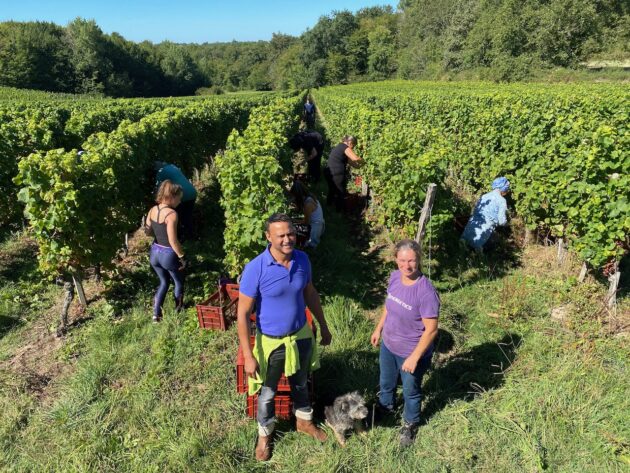
Hafid, who runs the harvest team, with Nelly.
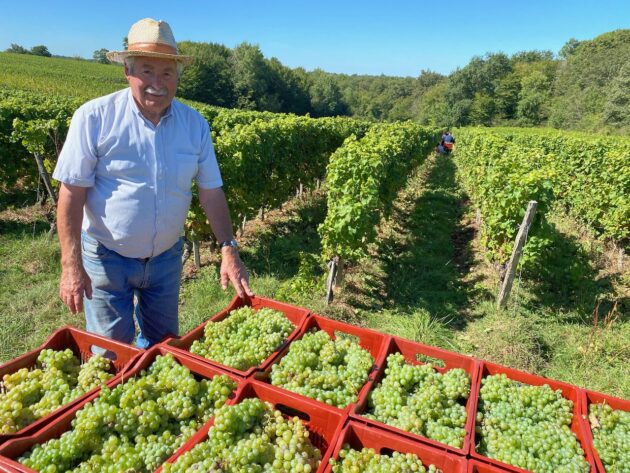
Michel (Papi) minding the crates on the trailer.

Nelly loading the grapes into the press.




Three years later… dégorgement, or disgorging:
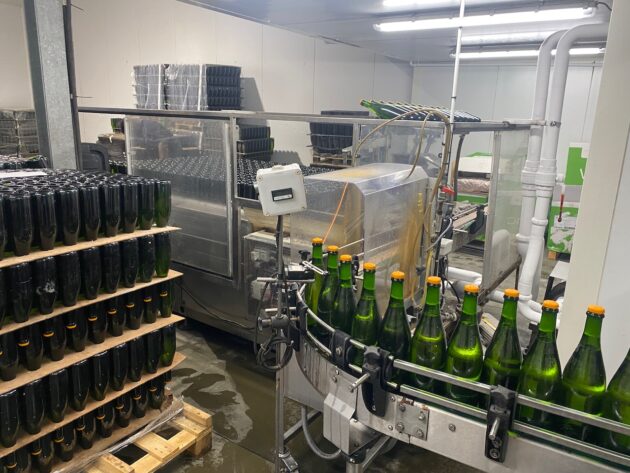
After the first fermentation in a stainless steel tank soon after the harvest, we add yeast and sugar for the second fermentation in bottle. We then keep the wine on its ‘lees’ for more than two years, and finally turn the bottles so the fine sediment is in the neck. When it’s time to take the sediment out and put the cork in, the neck of the bottle is frozen rapidly so the sediment pops out easily when the crown cap is pulled off.
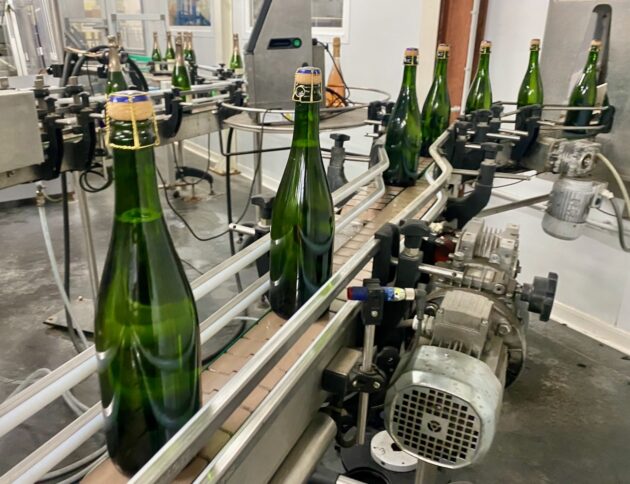
And then the cork goes in, and labelling takes place soon after along the chain.

And finally into our box.

